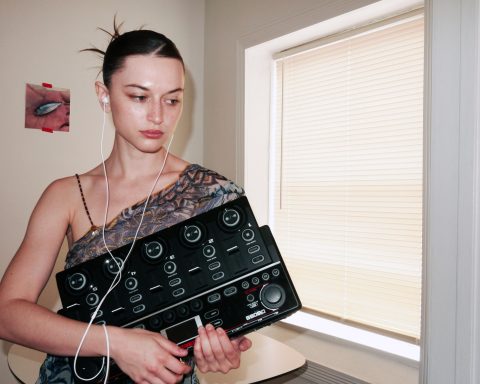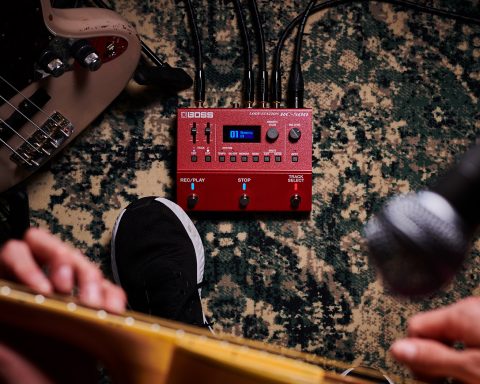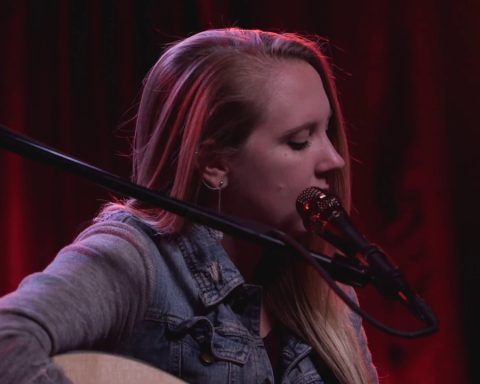As the worldwide looping craze has grown, looping artists continue to develop novel ways to hone their craft. Along the way, BOSS loopers rose to the challenge. Maybe you’re asking yourself, “Which is better for me, the RC-300 or RC-600?” If so, this is the right place. Let’s break down the old versus the new, the RC-300 versus the RC-600. We will also dive into the details of how the RC-600 takes the long heritage of BOSS loop stations to the next level.
Looping Arrives
Live looping has been around for a little while. Still, it’s fair to say that mainstream awareness of looping exploded with a young Ed Sheeran. He used his bright red BOSS RC-20XL to turn his solo acoustic setlist into a dynamic, multi-layered live performance. Sheeran still has some people wondering where the band is.
That simple yet effective setup helped support him throughout his entire career trajectory. Sheeran went from the hardest worker on the local circuit (300 gigs in a year once) to selling out stadiums worldwide. To this day, we can still sum up his core performance setup in three parts: vocals, guitar, and looping.
"Ed Sheeran used his red BOSS RC-20XL to turn his solo acoustic setlist into a dynamic, multi-layered live performance."
RC-300: A Titan in Its Time
Sheeran’s original RC-20XL gave way to the beloved RC-30, which BOSS updated and upgraded in 2020 in the form of the RC-500. For players in need of more options, the RC-50 was the first flagship BOSS looper. Released in 2006, this full-sized format eventually evolved into the now-classic RC-300.
When BOSS announced the RC-300 Loop Station in 2011, it was revolutionary for its time. It had 16-bit audio quality, three independently controllable tracks, plus XLR and stereo instrument inputs. These made the RC-300 the most powerful and feature-rich looper on the market. The unit was perfect for any pro musician looking to take their live looping to the next level.
The Loop FX switch opened up new worlds of creativity. It allowed artists to transform their voice or instrument using 16 BOSS effects. At the same time, dozens of onboard rhythm sounds provided a variety of staple beats for grooving.
Additionally, there was an expression pedal, three hours of recording time, and USB functionality. It’s no wonder that the RC-300 continues to inspire musicians to this day. It reigned supreme as the choice of professional loop artists everywhere—until now.
RC-600: The New Standard
The new flagship RC-600 Loop Station changes the looping game once again. So, what is a flagship looper? Put simply, flagship means one thing: the best. A flagship BOSS loop pedal features more tracks, comprehensive I/O, and versatile routing. It also boasts more effects, rhythm grooves/sounds, and footswitching options than the rest of the range. Let’s take a closer look at its features.
Tracks
- Six stereo loop tracks
- 13 hours total recording time
- Class-leading 32-bit audio quality
"No matter how complex your loops or how many times you overdub, the sound remains crystal clear with zero degradation."
The 32-bit fidelity ensures that no matter how complex your loops or how many times you overdub, the sound remains crystal clear with zero degradation.
These six tracks operate in series as well as parallel. This functionality gives players the freedom to build out verse/chorus song structures. You can even expand with an intro, pre-chorus, bridge, and outro to take full advantage of the looper.
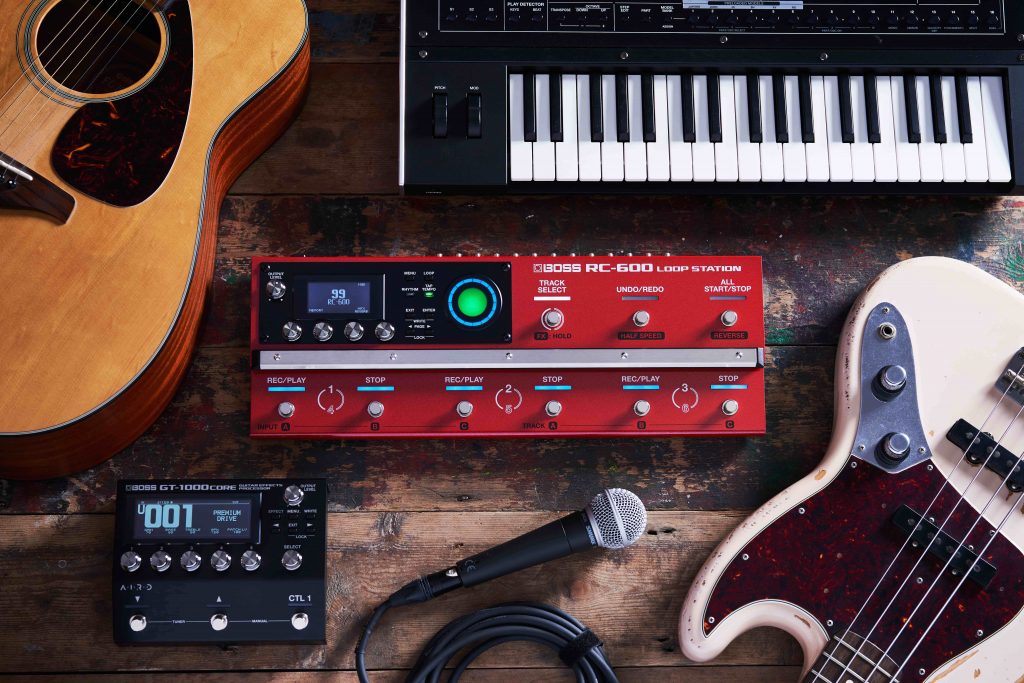
INPUTS AND OUTPUTS
Inputs
When it comes to inputs, take the RC-300 and double its amount. With the RC-600, you get:
- Two XLR inputs for vocals or anything miked up
- Two mono/stereo inputs for guitars, synthesizers, drum machines, etc.
All off the above run into an input mixer with two mic compressors and dedicated channel EQs for looping versatility.

Outputs and Routing
A comprehensive output section gives you three stereo outs (Main, Sub Output 1, and Sub Output 2) as well as a headphone out. Each has completely customizable track routing options.
These let you discretely send your guitar loops to your amp, your vocal loops to the PA, and your rhythm tracks to a separate channel on the mixer. Plus, send whatever mix of tracks you choose to your headphones to monitor.
EFFECTS AND RHYTHMS
Loop Effects
The Loop Effects section gets a massive upgrade on the RC-600, with 49 Input FX and 53 Track FX types. In addition, you get the ability to use four of each simultaneously. (That’s eight effects at once.) For electric guitarists, it’s worth mentioning that one of the FX types is AMP MODELING. This means that the RC-600 can function as a standalone unit if you want to leave the guitar amp at home.
Effects like BEAT SCATTER, BEAT SHIFT, and BEAT REPEAT are perfect for adding contemporary flair to your loops. There are also dedicated footswitches for REVERSE and HALF SPEED.

Drum Tracks
The RC-600 comes loaded with over 200 onboard rhythm patterns and 16 drum kits featuring sounds from the Roland V-Drums library. Genres from jazz to heavy metal, each with its collection of patterns and variations, add spontaneity and feel to your backing tracks. Furthermore, the RC-600 certainly takes up a lot less space than a drum kit.
Footswitches
A flagship looper needs a flagship level of control. That’s why the RC-600 boasts nine individually labeled, color-coded footswitches. By default, PEDAL MODE Layer 1 controls Track 1-3. Layer 2 controls Track 4-6, while Layer 3 (accessed by holding down TRACK SELECT) controls INPUT FX and TRACK FX. However, each of these footswitches is customizable based on your specific needs.
If you need even more control, connect up to four more footswitches or up to two expression pedals. Then, freely assign them to almost any internal function.

"Genres from jazz to heavy metal, each with its collection of patterns and variations, add spontaneity and feel to your backing tracks."
User Interface
The RC-600 is capable of depth and complexity. This is why it’s paired with a vibrant graphic LCD screen. To that end, the screen provides an intuitive user interface. It also has an easy-to-read menu structure and clear visual cues for the status of your six loops.
All this comes housed in an eye-catching bright red premium enclosure. The unit is somehow both smaller and lighter than the outgoing RC-300.
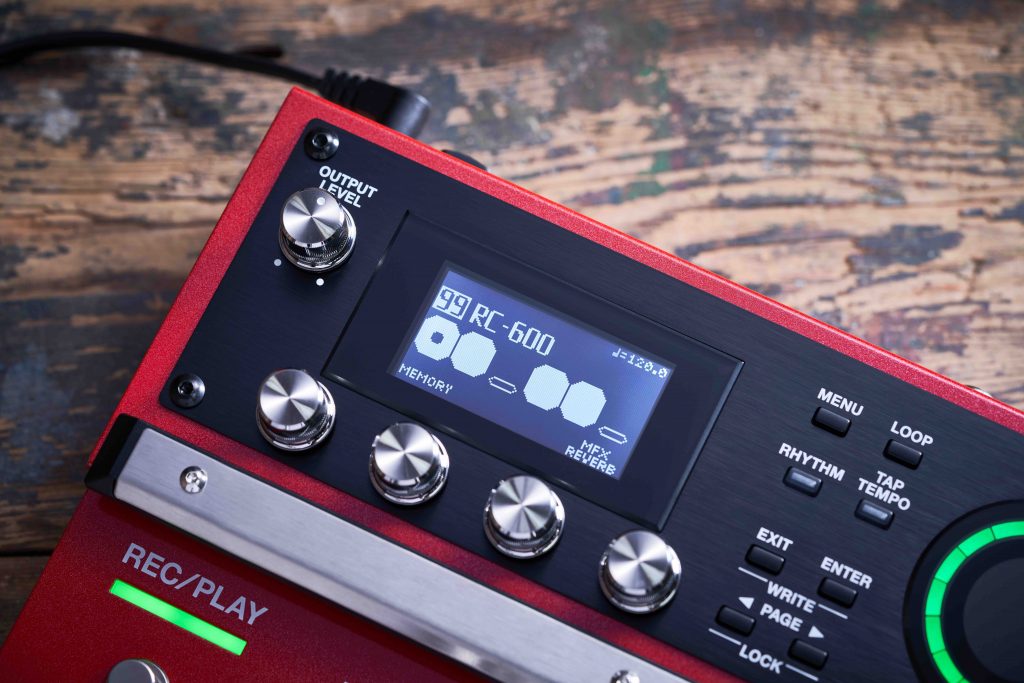
Looping Applications
So, why do you need a six-track looper? We believe that musicians will always find exciting ways to use the tools available to them. More freedom to create can only lead to more inspired—and more inspiring—ways to loop. Here are a few ways you might use the RC-600 to take your looping performance to the next level:
Acoustic Soloist
If it’s just you, your vocals, and a guitar, six tracks provide immense freedom to structure songs. You can try everything from verse/chorus/bridge/breakdown to more complex arrangements. Use the Guitar-to-Bass effect to emulate a bassline. Then get the beat going and the crowd stomping with over 200 onboard rhythm patterns and 16 drum kits.
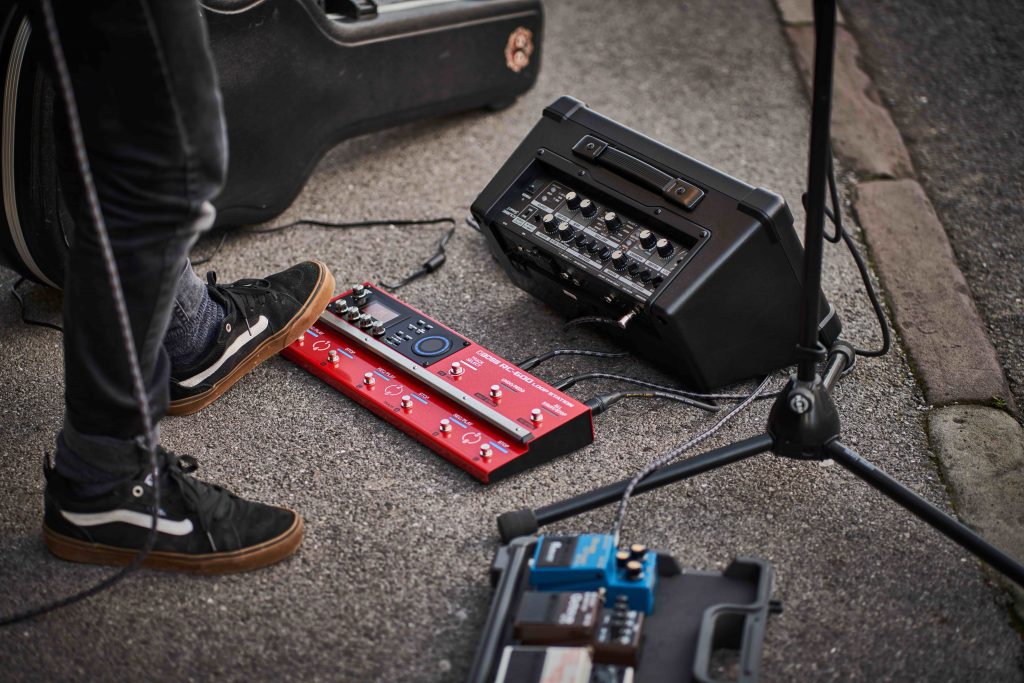
Acoustic Duo
Run two mics and both your electric and acoustic guitars into the RC-600. With six tracks, you don’t have to compromise on your arrangement, allowing you to loop and harmonize vocals along with guitar parts. Don’t worry about bringing a guitar amp; the RC-600 has you covered with amp modeling in its FX section.
Multi-Instrumentalist
If you’re a one-person band, then throw the book at the RC-600. Mic up your saxophone, plug in your electric violin and load up your favorite samples onto your SPD-SX. Then, hook up your vocal mic, and put on the most eclectic, engaging show your audience has ever seen.

Full Band
Get the whole band involved: Run everyone into the looper. Then use six tracks in conjunction with INPUT/TRACK FX to warp, scatter, and stutter your way to new inspiration and new compositions. Vocal mic, bass DI, guitar, and V-Drums all plugged into the RC-600 isn’t just a writing session—it’s a blast.
"More freedom to create can only lead to more inspired—and more inspiring—ways to loop."
The Next Frontier
The RC-600 takes everything great about the RC-300 and kicks it up an order of magnitude. It comes armed with class-leading sound, six stereo phrase tracks, and massive onboard effects selection. With ultra-flexible I/O and switching control, the RC-600 is ready for any looping adventure.


